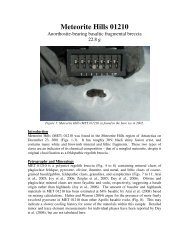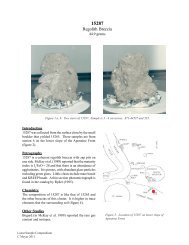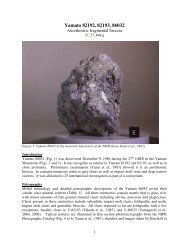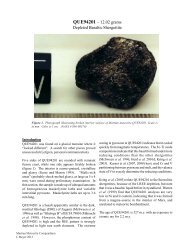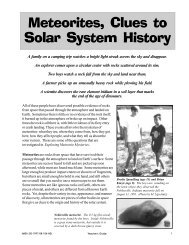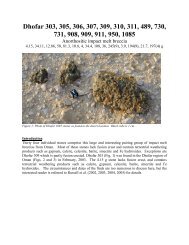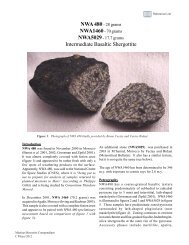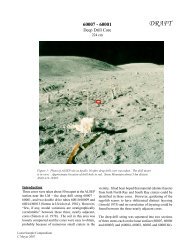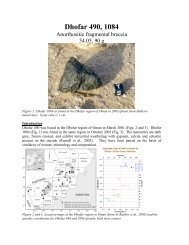Moore County Unbrecciated Cumulate Eucrite, 1.88 kg
Moore County Unbrecciated Cumulate Eucrite, 1.88 kg
Moore County Unbrecciated Cumulate Eucrite, 1.88 kg
You also want an ePaper? Increase the reach of your titles
YUMPU automatically turns print PDFs into web optimized ePapers that Google loves.
<strong>Moore</strong> <strong>County</strong> is a flattened, conical-shaped (“shield”) meteorite with a dark brown, glossy fusion crust,<br />
well-developed flow lines and up to 4-mm deep regmaglypts. The fusion crust is 7 cm and a geocentric velocity of ≥6<br />
km/sec (Carver and Anders, 1976).<br />
<strong>Moore</strong> <strong>County</strong> is an unbrecciated cumulate eucrite, composed mostly of equigranular, uniformlydistributed,<br />
coarse-grained plagioclase and pyroxene. It is texturally and chemically similar to terrestrial<br />
cumulates, including evidence of crystal accumulation at the bottom of a magma chamber (Hess and<br />
Henderson, 1949). Chemically, it is more magnesian than non-cumulate eucrites, but it is the most ironrich<br />
cumulate eucrite.<br />
Figure 1b: The <strong>Moore</strong> <strong>County</strong> meteorite. This view is of the forward face with clear regmaglypts and flow<br />
lines. No scale is given for the photo, but maximum dimensions (at right angles) were reported as 15 cm<br />
x 10.5 cm x 8 cm (6 in x 4 3/16 in x 3 3/16 in). From Henderson and Davis (1936).<br />
General Petrography: The <strong>Moore</strong> <strong>County</strong> eucrite was first described by Henderson and Davis (1936),<br />
followed by Hess and Henderson (1949). These sources contain significant and detailed petrographic<br />
descriptions, as well as whole-rock and mineral chemistry data, and provide a good basic overview of<br />
the meteorite.<br />
2




